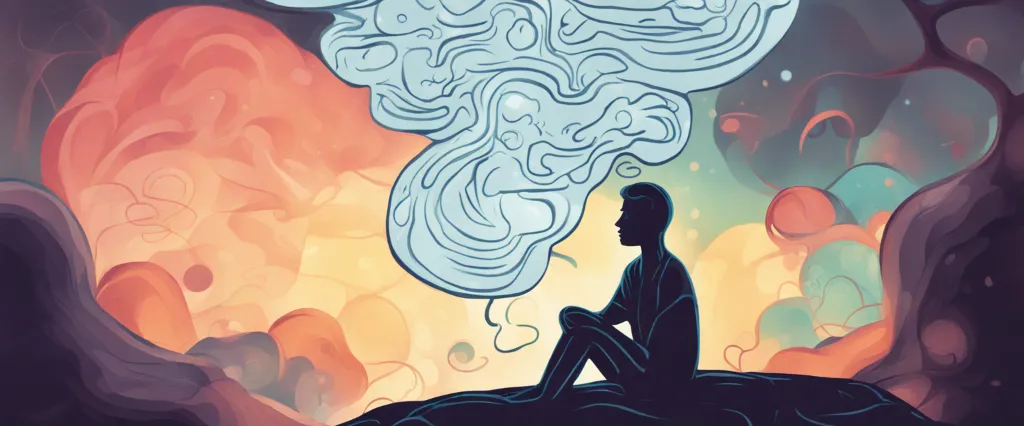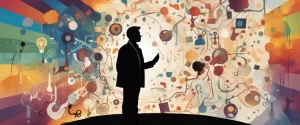
In a world engulfed by chaos and the relentless pursuit of success, it becomes increasingly vital to find solace and a path to inner peace. In this comparative study, we delve into the powerful realm of two enlightening works – “The Power of Now” by Eckhart Tolle and “Waking the Tiger” by Peter A. Levine – both offering transformative insights and invaluable tools to navigate the complexities of our lives.
“The Power of Now” is an internationally acclaimed guide that empowers readers to embrace the present moment fully. Through profound spiritual teachings, Tolle enlightens individuals on the importance of practicing mindfulness, shedding the shackles of past regrets and future anxieties, and living consciously in the present.
On the other hand, “Waking the Tiger” delves into the realm of trauma healing as a catalyst for personal growth and liberation. Renowned psychotherapist Peter A. Levine navigates readers through the intricate and often misunderstood world of trauma, imparting a transformative understanding of the body’s innate capacity for healing and resilience.
While both books tackle different aspects of human existence – one focusing on mindfulness and presence, the other on trauma and healing – they converge in their ultimate goal of setting us on a path to inner peace, personal growth, and emotional well-being. By exploring the unique perspectives and methodologies presented by Tolle and Levine, we aim to uncover the threads that weave these literary works together, enabling readers to embrace a holistic approach to self-discovery.
Through the analysis of their theories and practices, we will examine the similarities and differences between the two books, highlighting their respective strengths and the ways in which they complement each other. By doing so, we hope to provide readers with a comprehensive understanding of how to transcend the limitations of past trauma and embrace the present moment, ultimately enabling them to embark on a journey towards self-acceptance, healing, and a richer, more fulfilled life.
In the pages ahead, we will delve into the significant themes explored in “The Power of Now” and “Waking the Tiger,” analyzing the authors’ perspectives on mindfulness and trauma healing respectively. By examining their unique approaches and the transformative potential they offer to readers, we hope to shed light on the essential knowledge that can positively impact our lives, both individually and collectively.
Prepare to embark on a thought-provoking journey of self-discovery as we navigate the profound teachings of Eckhart Tolle and Peter A. Levine, unlocking the power within ourselves to break free from the chains of the past and embrace the beauty of the present moment.
Brief Summary of Two Books
The Power of Now by Eckhart Tolle
“The Power of Now” by Eckhart Tolle is a spiritual guidebook that explores the concept of living in the present moment and finding enlightenment. Tolle explains that most human suffering is a result of living in the past or the future, unable to fully embrace the now. He argues that by becoming aware of our incessant thoughts and identifying with the stillness within, we can transcend the limitations of the ego and experience true peace and contentment. Tolle offers practical techniques and exercises to cultivate presence, silence the mind, and tap into our inner power to live a more fulfilling life. Through his teachings, Tolle encourages readers to embrace the transformative power of the present moment and awaken to their true essence.
Waking the Tiger by Peter A. Levine
“Waking the Tiger: Healing Trauma” by Peter A. Levine provides a unique perspective on trauma and offers insights into how it can be resolved. The book centers around the understanding that trauma is not a mental disorder, but rather a physiological response that can be healed.
Levine, a psychotherapist and expert in trauma healing, introduces the concept of the “trauma vortex,” in which individuals get caught in a cycle of re-experiencing traumatic events. He explores how trauma is stored in the body and emphasizes the importance of addressing it on a somatic level.
Levine offers practical techniques to release trapped traumatic energy and restore the body’s natural balance. He introduces the concept of “titration,” which involves breaking down the traumatic experience into smaller, manageable parts, rather than overwhelming the individual with the entire memory at once.
Through case studies and real-life examples, Levine demonstrates the effectiveness of his approach. He explores the connection between trauma and various symptoms such as anxiety, depression, and chronic pain, providing guidance on how to address these issues through somatic experiencing.
Overall, “Waking the Tiger” is a compelling exploration of trauma and its resolution. It offers practical tools and techniques for individuals to heal from the lasting effects of trauma and regain their sense of safety and vitality.
Comparison between Two Books

Similarities in Psychological Healing
“The Power of Now” by Eckhart Tolle and “Waking the Tiger” by Peter A. Levine both explore the process of psychological healing, albeit from different perspectives. Despite their differences, there are some key similarities in their understanding and approach to healing.
1. Moving beyond the past: Both books emphasize the importance of letting go of past traumas and negative experiences in order to heal. Tolle encourages readers to focus on the present moment and not let past events dictate their lives, while Levine suggests that understanding and releasing traumatic experiences from the past is crucial for healing.
2. Mind-body connection: Both authors acknowledge the strong connection between the mind and the body in healing. Tolle emphasizes the importance of being aware of physical sensations and emotions as a means of understanding deeper issues and finding inner peace. Levine explores how trauma can be stored in the body, and proposes somatic experiencing as a way to release and heal these stored traumas.
3. Self-awareness and presence: Both books stress the significance of self-awareness as a foundational aspect of healing. Tolle emphasizes the practice of mindfulness to be fully present in the moment and to recognize destructive thought patterns. Levine also emphasizes the importance of presence and cultivating a sense of safety and grounding as a means to heal trauma.
4. Embracing the present moment: Both authors highlight the transformative power of embracing the present moment. Tolle encourages readers to free themselves from identification with the mind and the ego, urging them to fully accept the present moment as it is. Levine similarly suggests that healing trauma involves coming back to the present moment and grounding oneself in the here and now.
5. Acceptance and non-resistance: Both Tolle and Levine advocate for the practice of acceptance and non-resistance as a path towards healing. Tolle teaches readers to accept and surrender to the present moment, including any pain or discomfort, while Levine suggests that by embracing and understanding our traumas without resistance, we can facilitate healing.
In summary, both “The Power of Now” and “Waking the Tiger” offer valuable insights into psychological healing. They stress the importance of letting go of the past, recognizing the mind-body connection, practicing self-awareness and presence, embracing the present moment, and cultivating acceptance. While they approach these concepts from different angles, their shared focus on these aspects suggests that there are underlying similarities in their understanding of psychological healing.
Divergences in Psychological Healing
The Power of Now by Eckhart Tolle and Waking the Tiger by Peter A. Levine are two influential books that approach psychological healing from different perspectives. While both books delve into the importance of understanding and resolving past traumas, they diverge in terms of their approach and focus.
In The Power of Now, Tolle emphasizes the significance of living in the present moment. He argues that most psychological suffering stems from either dwelling on past events or worrying about the future. Tolle asserts that by focusing on the present moment and cultivating an awareness of our thoughts and emotions, we can alleviate mental anguish and achieve inner peace. Tolle provides practical guidance and techniques on how to detach from negative thoughts and emotions, ultimately leading to psychological healing.
On the other hand, Waking the Tiger by Peter A. Levine explores the connection between trauma and the physical body. Levine introduces the concept of “trauma healing” and suggests that unresolved traumatic experiences can manifest in physical symptoms and behaviors. He emphasizes the importance of understanding the body’s natural ability to regulate and heal itself. By exploring the physiological responses to trauma, Levine provides insights into how the body can release past traumas and recover its natural state of equilibrium.
While Tolle’s approach focuses more on mindfulness and being present, Levine’s perspective emphasizes understanding and releasing trauma through the body. Tolle appeals to a broader audience seeking general psychological healing, whereas Levine’s work specifically targets those who have experienced trauma and are searching for ways to recover.
In summary, the primary divergence about psychological healing in these books lies in their approach. The Power of Now emphasizes living in the present moment as a means of achieving psychological well-being, while Waking the Tiger emphasizes understanding and addressing past traumas through the body’s natural ability to heal itself. Both books offer valuable insights into psychological healing, albeit with different focuses and perspectives.

Conclusion
Both The Power of Now by Eckhart Tolle and Waking the Tiger by Peter A. Levine are highly regarded books in their respective fields, but they offer different perspectives and focus on different aspects of personal growth.
The Power of Now is a spiritual and philosophical book that explores the concept of mindfulness and being present in the moment. Tolle explains how living in the present moment can bring about inner peace and freedom from suffering. The book provides practical insights and techniques for cultivating mindfulness and achieving a greater sense of clarity and well-being.
Waking the Tiger, on the other hand, delves into the realm of trauma and its effects on the mind and body. Peter A. Levine, a renowned expert in trauma healing, explores the connection between trauma, the nervous system, and the body’s natural ability to heal. The book offers a unique perspective on trauma and guides readers through exercises and techniques for resolving trauma and restoring balance in their lives.
Both books have received positive reviews and have helped countless readers in their personal growth journeys. The choice between the two depends on your personal interests and the specific areas of personal growth you are looking to focus on. If you are interested in mindfulness, spiritual growth, and living in the present moment, The Power of Now would be a great choice. However, if you are intrigued by trauma healing and gaining a deeper understanding of the mind-body connection, then Waking the Tiger would be the more appropriate choice. Ultimately, both books are worthy of reading, and it may be beneficial to explore both if you have the time and interest.



